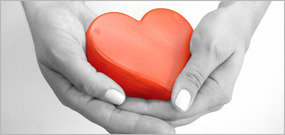Study Shows Bystander Use of AEDs Saves Lives
Posted April 15th, 2010 by SCAFoundation
Sudden Cardiac Arrest Survival Rates Surge When AEDs Are Used Before EMS Arrival
Pittsburgh, Penn. – April 15, 2010 – Victims of sudden cardiac arrest (SCA) who are treated with automated external defibrillators (AEDs) by bystanders have a much greater chance of survival than their counterparts, according to landmark research by the Resuscitation Outcomes Consortium, just published in the Journal of the American College of Cardiology.
Researchers reviewed 13,769 cases of SCA occurring outside hospitals in multiple sites in the U.S. and Canada. Using multivariate analysis, researchers looked at potential confounding factors such as bystander CPR and time to EMS arrival. An AED was used before arrival of emergency medical services (EMS) personnel in 2.1 percent of cases. Survival in the overall group was 7 percent, compared to 24 percent when an AED was applied before EMS arrival, and 38 percent when an AED shock was delivered before EMS arrival. Use of an AED before EMS arrival increased the odds of survival by 80 percent.
“This is the first time a broad population was studied in this country,” said principal investigator, Dr. Myron Weisfeldt, Director, Department of Medicine, Johns Hopkins Medical Institutions. “This study shows in a dramatic way that the use of AEDs by bystanders is a very potent indicator of survival.”
When study results were extrapolated to the entire population of the U.S. and Canada, researchers found that 470 people are saved each year due to bystander use of AEDs. “We are talking about nearly 500 people with families, said Weisfeldt. “I think the impact is significant.”
“This study is the landmark research we have been waiting for. It confirms the need for widespread deployment of AEDs, and the need for the public to become familiar with their use,” said Mary Newman, President of the Sudden Cardiac Arrest Foundation.
“This data also supports the efforts of organizations making efforts to advance public education,” said Weisfeldt. “We need to get the message out that, ‘You can do this. Sixth graders can do this. With AEDs, you have a real chance to save a life.’”
In addition, the ROC study analyzed the type of bystander using the AED. The best results occurred when AEDs were used by lay people, Weisfeldt said. The second-best results occurred when AEDs were used by healthcare personnel, and the worst results occurred when AEDs were used by police. The differences are likely related to the location of arrest. People who are out in public places generally are healthier than those in hospitals and nursing homes, where healthcare personnel were generally responding. And police were generally responding to victims at home, where victims are more likely to have had unwitnessed SCA, longer time to treatment and, therefore, lower chance of survival.
The study also found regional variation that likely reflected the adequacy of deployment and EMS response times. In some sites, bystanders used AEDs 7 percent of the time. “What if all sites could achieve this level?,” Weisfeldt mused, “How many more would survive?”
Recent News
Maryland Governor O'Malley Declares May 25th Sudden Cardiac Arrest Awareness Day in Memory of Andrew Helgeson
Posted May 24, 2010 by mnewman
Governor Martin O’Malley proclaimed May 25, 2010 Sudden Cardiac Arrest Awareness Day in Maryland in memory of Andrew Helgeson who died from sudden cardiac arrest (SCA) five years ago at age 18.
Described as "the epitome of health," R. Andrew Helgeson was only days from graduating from Mont Blair High School in Silver Spring, MD, and was to pick up the school's Scholar/Athlete Award the day he died. Andrew had a full college academic scholarship and was looking forward to playing starting lacrosse goalie at Fairleigh Dickinson University. The first sign that something was wrong was his death.
"It is very important to broaden the awareness that SCA kills youth," said Rita and Richard Helgeson, Andrew's parents. "There should be cardiac screening for children, and automated external defibrillators (AEDs) should be placed throughout the community. Please take an AED and CPR course. SCA can strike anyone of any age at any time."
SAVE THE DATE: The R. Andrew Helgeson Memorial Foundation is sponsoring the R. Andrew Helgeson Memorial/Alumni Montgomery Blair Lacrosse game on June 4, 2010 at 6 PM. Admission is free. Donations to support SCA awareness and donations of AEDs will be accepted.
FOR MORE INFORMATION: R. Andrew Helgeson Memorial Foundation, a 501(c)(3) Public Charity, CFC #23699, 301-236-0448 voice, 301-388-0963 fax, 301-704-6579 cell, rahfoundation@comcast.net, www.andrewhelgeson.org.
Runner Saved at Boston Marathon
Posted April 20th, 2010 by SCAFoundation
BOSTON -- A man running the Boston Marathon Monday was saved by spectators and fellow athletes after he collapsed and suffered cardiac arrest. Carleton Smith, 64, collapsed and staggered to the ground at the intersection of Beacon and Mountfort streets in Kenmore Square at about 1:20 p.m. The location is less than two miles from the end of the race. Spectators and fellow runners began CPR as a nearby ambulance crew was called.
"That was probably the greatest thing that could have happened to that man when he fell down," said Janell Jimenez of EMS. She and her partner then began to use a defibrillator to resuscitate Smith, who is from Louisiana.
"We were doing CPR and ended up bringing him to the back of the ambulance where we got a pulse and he started breathing on his own," said Jimenez.
SOURCE: The Boston Channel
Speak with a Heart Smart Tech Today! 800.422.8129
Copyright 2010. Heart Smart Technology. All Rights Reserved.
Trusted Worldwide.
Heart Smart is pleased to offer special pricing for:
schools
churches
military
corporate
veterans
responders
senior citizens
children at risk
medical professionals
CALL NOW! or Click Here
(to request a Quote)
AED Defibrillators
AED Accessories
AED Package Specials
SCA News and Info
Rescue Training
110% Low Price
Guarantee
30 DAY
Money Back
FREE
Shipping
800.422.8129
Request a Quote and save HUNDREDS!
OR CALL (800) 422-8129 TODAY!


